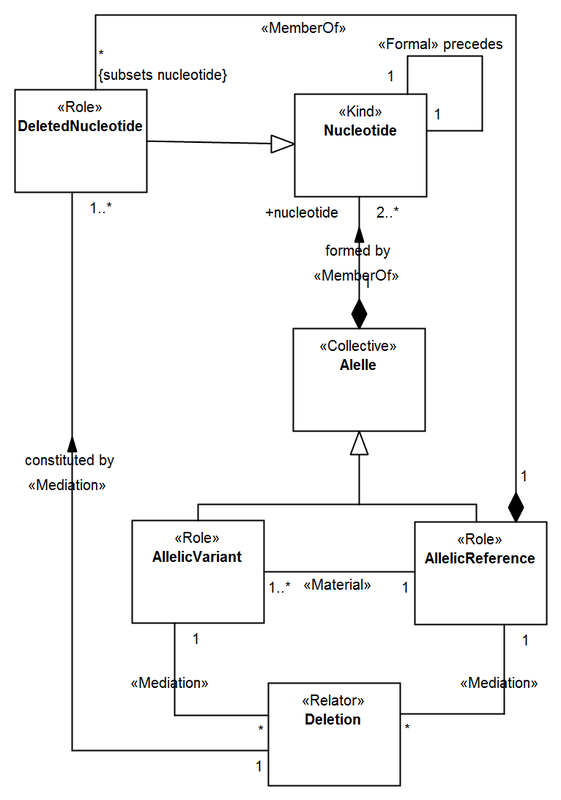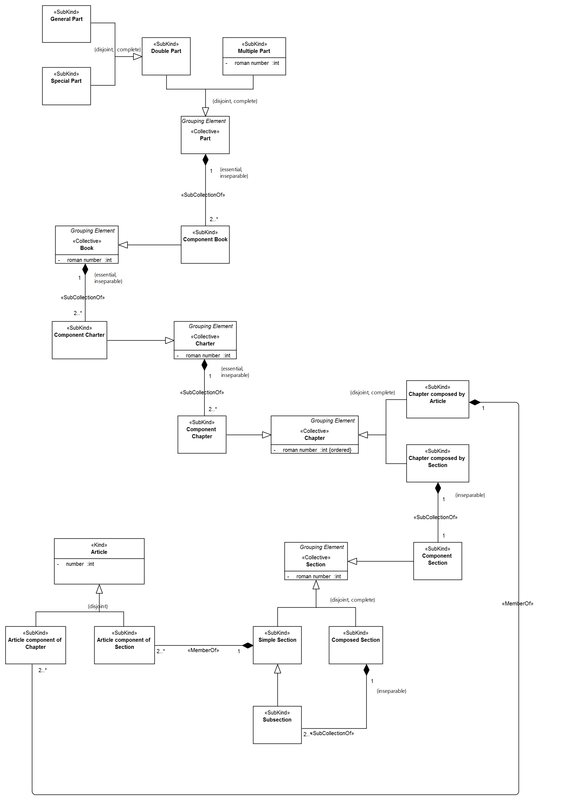Collective¶
Definition¶
The «Collective» construct is used to represent rigid concepts that provide an identity principle for their instances. The main characteristic of a «Collective» is that it has an homogenous internal structure, i.e., all parts are perceived in the same way by the whole (see the «MemberOf» relation for more details about members of collections).

To decide whether or not to classify a concept as a collective, think about the relation between it has towards its parts (or members). Do all members are “equally perceived” by the whole (the collective)? In other words, do all members contribute in the same way to the functionality of the whole? If the answers are yes, you have a collective. It is important to keep in mind that some concepts, like Family or Fleet could be classified as both collectives and functional complexes. For instance, if we understand a family as a group of people with equal roles and responsibilities towards the family, we would say it is a collective. However, if we distinguish a person as the head of the family, and another as being responsible for the family’s income, we would say that a family is a functional complex.

As the other identity provider stereotypes («Kind», «Quality», «Relator» and «Mode»), a «Collective» can be specialized by subkinds, phases and roles, as well as generalized by mixins and categories.
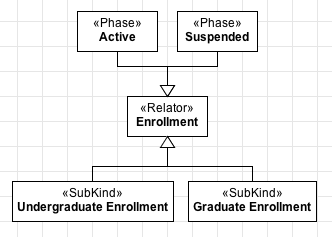
Constraints¶
C1: A «Collective» cannot have an identity provider («Kind», «Collective», «Quantity», «Relator», «Mode» and «Quantity») as its direct or indirect super-type.

C2: A «Collective» cannot have types that inherit identity («Subkind», «Role» and «Phase») as its direct or indirect super-types.
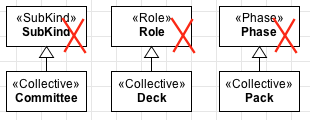
C3: A «Collective» cannot have types that aggregate individuals with different identity principles («Category», «RoleMixin» and «Mixin») as its direct or indirect subtypes.
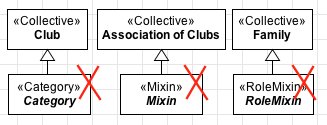
C4: As a rigid type, a «Collective» cannot have any anti-rigid type («Role», «RoleMixin» and «Phase») as its direct or indirect super-type.
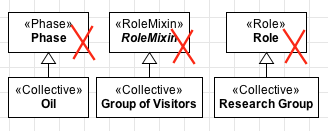
Common questions¶
Ask us some question if something is not clear …
